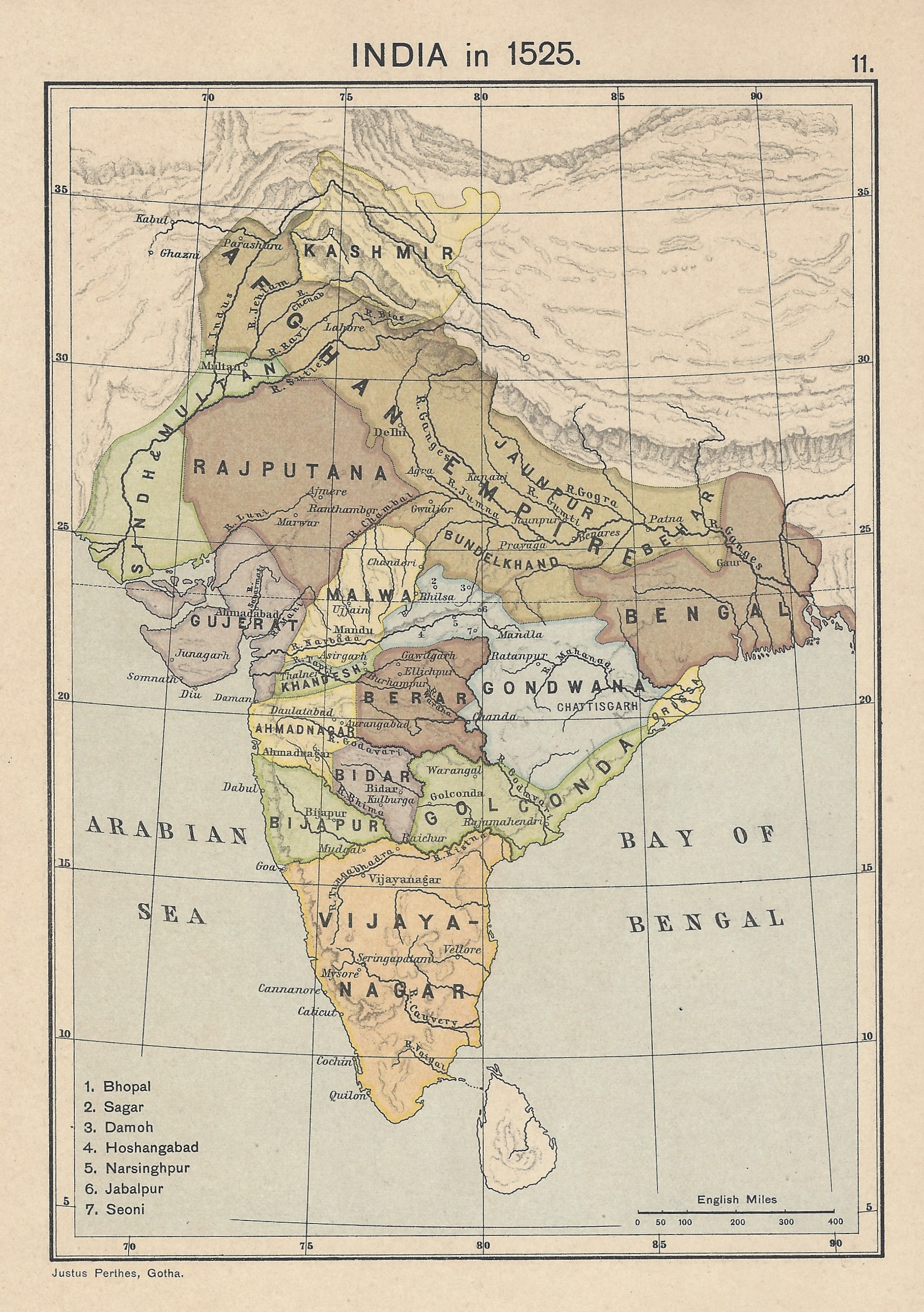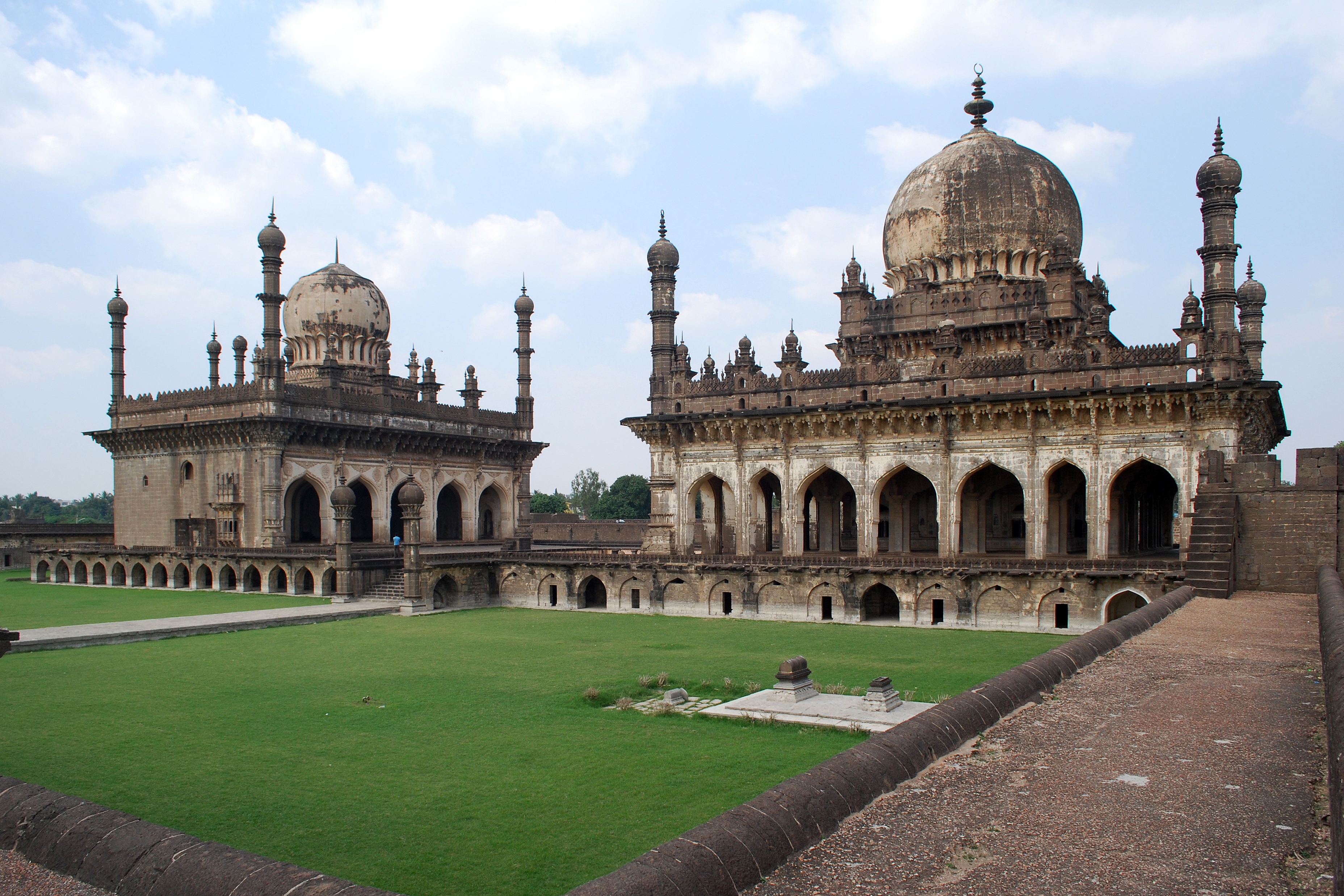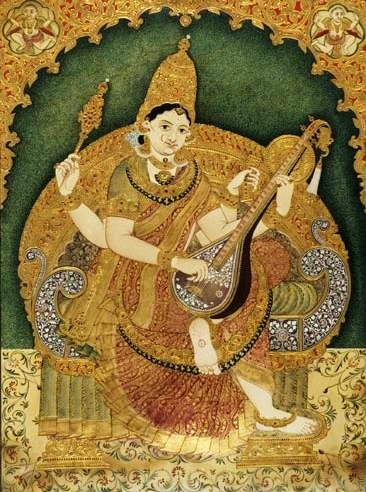|
Kitab-i Nauras
''Kitab-i Nauras'' (), also transliterated as Kitab-e-Nauras, is a 16th-century treatise written by Sultan Ibrahim Adil Shah II of Bijapur. It was written with the title ''Nauras'', meaining ''Nine Rasas'', but was named as ''Nauras Nama'' or ''Kitab-i Nauras'' later. It is a collection of 59 Manqabat Kalaam (song) and 17 couplets in the Deccani language. Contents Introduction The introduction to the book was not written by Ibrahim; instead, it was written by the poet Muhammad Zuhuri in Persian rather than Deccani. Zuhuri states that the preface is "a worthless stone for the garland made of royal pearls". Songs In the ten known manuscripts, there are fifty-nine songs, although no single copy contains all of them. In addition, there are seventeen dohas. A significant portion of the songs are praises sung for Saraswati, Ganesha, and other Hindu deities. Others praise the prophet Muhammad and Sufi saint Bande Nawaz Syed Muhammad ibn Yousuf al-Hussaini (30 July 1321 ... [...More Info...] [...Related Items...] OR: [Wikipedia] [Google] [Baidu] |
Bijapur Sultanate
The Sultanate of Bijapur was an early modern kingdom in the western Deccan and South India, ruled by the Muslim Adil Shahi (or Adilshahi) dynasty. Bijapur had been a '' taraf'' (province) of the Bahmani Kingdom prior to its independence in 1490 and before the kingdom's political decline in the last quarter of the 15th century. It was one of the Deccan sultanates, the collective name of the kingdom's five successor states. The Sultanate of Bijapur was one of the most powerful states on the Indian Subcontinent at its peak, second to the Mughal Empire which conquered it in 1686 under Aurangzeb. After emigrating to the Bahmani Sultanate, Yusuf Adil Shah rose through the ranks to be appointed governor of the province of Bijapur. In 1490, he created a ''de facto'' independent Bijapur state which became formally independent with the Bahmani collapse in 1518. The Bijapur Sultanate's borders changed considerably throughout its history. Its northern boundary remained relatively stabl ... [...More Info...] [...Related Items...] OR: [Wikipedia] [Google] [Baidu] |
Deccani Language
Deccani ( ''dakanī'' or ''dakhanī''; also known as Deccani Urdu, Deccani Hindi, and Deccani Hindustani) is an Indo-Aryan language variety based on a form of Hindustani spoken in the Deccan region of south-central India and is the native language variety of the Deccani people. The historical form of Deccani sparked the development of Urdu literature during the late-Mughal period. Deccani arose as a ''lingua franca'' under the Delhi Sultanate and Bahmani Sultanates, as trade and migration from the north introduced Hindustani to the Deccan. It later developed a literary tradition under the patronage of the Deccan Sultanates. Deccani itself came to influence modern standard Urdu and later Hindi. The Deccani language has an Indo-Aryan core vocabulary, though it incorporated loanwords from Persian, which was the official language of the Deccan Sultanates. Additionally, Deccani differs from northern Hindustani sociolects due to archaisms retained from the medieval era, ... [...More Info...] [...Related Items...] OR: [Wikipedia] [Google] [Baidu] |
Persian Language
Persian ( ), also known by its endonym and exonym, endonym Farsi (, Fārsī ), is a Western Iranian languages, Western Iranian language belonging to the Iranian languages, Iranian branch of the Indo-Iranian languages, Indo-Iranian subdivision of the Indo-European languages. Persian is a pluricentric language predominantly spoken and used officially within Iran, Afghanistan, and Tajikistan in three mutual intelligibility, mutually intelligible standard language, standard varieties, respectively Iranian Persian (officially known as ''Persian''), Dari, Dari Persian (officially known as ''Dari'' since 1964), and Tajik language, Tajiki Persian (officially known as ''Tajik'' since 1999).Siddikzoda, S. "Tajik Language: Farsi or not Farsi?" in ''Media Insight Central Asia #27'', August 2002. It is also spoken natively in the Tajik variety by a significant population within Uzbekistan, as well as within other regions with a Persianate society, Persianate history in the cultural sphere o ... [...More Info...] [...Related Items...] OR: [Wikipedia] [Google] [Baidu] |
Ibrahim Adil Shah II
Ibrahim Adil Shah II (1570 – 12 September 1627) was Sultan of the Sultanate of Bijapur and a member of the Adil Shahi dynasty. Under his reign the sultanate had its greatest period as he extended its frontier as far south as Mysore. He was a skilful administrator, artist, poet and a generous patron of the arts. He reverted to the Sunni orthodoxy of Islam, but remained tolerant of other religions, including Christianity. However, during his reign high-ranking Shiite immigrants became unwelcome and in 1590, he ordered the confinement of criers who read the khutba in the Shia form. The Adil Shahis under his rule left a tradition of cosmopolitan culture and artistic patronage whose architectural remains are to be seen in the capital city of Bijapur. Biography After the death of Ali Adil Shah I in 1580, the kingdom's nobles appointed Imran Ibrahim, son of Imran Sayzada Tahmash Adil Shah and nephew of Ali Adil Shah I, as sultan. At this time, Ibrahim Adil Shah II was a ... [...More Info...] [...Related Items...] OR: [Wikipedia] [Google] [Baidu] |
Sultanate Of Bijapur
The Sultanate of Bijapur was an early modern kingdom in the western Deccan and South India, ruled by the Muslim Adil Shahi (or Adilshahi) dynasty. Bijapur had been a ''taraf'' (province) of the Bahmani Kingdom prior to its independence in 1490 and before the kingdom's political decline in the last quarter of the 15th century. It was one of the Deccan sultanates, the collective name of the kingdom's five successor states. The Sultanate of Bijapur was one of the most powerful states on the Indian Subcontinent at its peak, second to the Mughal Empire which conquered it in 1686 under Aurangzeb. After emigrating to the Bahmani Sultanate, Yusuf Adil Shah rose through the ranks to be appointed governor of the province of Bijapur. In 1490, he created a ''de facto'' independent Bijapur state which became formally independent with the Bahmani collapse in 1518. The Bijapur Sultanate's borders changed considerably throughout its history. Its northern boundary remained relatively stable, ... [...More Info...] [...Related Items...] OR: [Wikipedia] [Google] [Baidu] |
Muqarnas
Muqarnas (), also known in Iberian architecture as Mocárabe (from ), is a form of three-dimensional decoration in Islamic architecture in which rows or tiers of niche-like elements are projected over others below. It is an archetypal form of Islamic architecture, integral to the vernacular of Islamic buildings, and typically featured in domes and vaults, as well as iwans, entrance portals, or other niches. It is sometimes referred to as "honeycomb vaulting" or "stalactite vaulting". The muqarnas structure originated from the squinch. Its purpose is to create a smooth, decorative zone of transition in an otherwise bare, structural space. This structure gives the ability to distinguish between the main parts of a building and serves as a transition from the walls of a square or rectangular room to a round dome or vault above it. Muqarnas could also form entire vaults and domes. From below, these compositions can create an elaborate visual effect based on the interplay of light ... [...More Info...] [...Related Items...] OR: [Wikipedia] [Google] [Baidu] |
Muhammad Zuhuri
Nūr al-Dīn Muḥammad Ẓuhūrī (d. AH 1025/CE 1616) was a Persian poet born around 1537. Ẓuhūrī states that he was born in Qāʾin, but tradition identifies his birthplace as a village in the district of Turshiz, thus his often used nisbat Turshīzī. He began his career in Yazd at the court of Ghiyās al-Dīn Mīr-i Mīrān, where he was acquainted with the poet Waḥshī. After spending several years in Shiraz he travelled to the Deccan in 1580 where he entered the service of Ibrahim Adil Shah II. There he married the daughter of Mawlānā Malik Qumī. Among his known works is the ''Sāqīʻnāma''. An anthology of his poems is titled ''Kulliyyāt-i Ẓuhūrī'', the oldest copy of which appears to be that in the India Office collection at the British Library. The seals in this manuscript show that it was in the library of Shah Jahan Shah Jahan I, (Shahab-ud-Din Muhammad Khurram; 5 January 1592 – 22 January 1666), also called Shah Jahan the Magnificent, was th ... [...More Info...] [...Related Items...] OR: [Wikipedia] [Google] [Baidu] |
Doha (poetry)
Doha (, , ) is a form of self-contained rhyming couplet in poetry composed in Mātrika metre. This genre of poetry first became common in Apabhraṃśa and was commonly used in Hindustani language poetry. Among the most famous dohas are those of Sarahpa, Kabir, Mirabai, Rahim, Tulsidas, Surdas A doha is a couplet consisting of two lines, each of 24 instants (Matras). The rules for distinguishing light and heavy syllables is slightly different from Sanskrit. Each line has 13 instants in first part and 11 instants in the second. The first and third quarters of doha have 13 instants which must parse as 6-4-3. Many Hindi poets have created several books which explain whole stories and epics in the form of dohas. The most popular is Tulsidas' '' Ramcharitmanas'', a popular rendition of the Sanskrit epic ''Ramayana''. Examples Here is a Doha by Rahim: जो रहीम उत्तम प्रकृति का कर सकत कुसंग। चन्दन विष � ... [...More Info...] [...Related Items...] OR: [Wikipedia] [Google] [Baidu] |
Saraswati
Saraswati (, ), also spelled as Sarasvati, is one of the principal Devi, goddesses in Hinduism, revered as the goddess of knowledge, education, learning, arts, speech, poetry, music, purification, language and culture. Together with the goddesses Lakshmi and Parvati, she forms the trinity of chief goddesses, known as the Tridevi. Sarasvati is a pan-Indian deity, venerated not only in Hinduism but also in Jainism and Buddhism.Ludvik (2007), pp. 1, 11. She is one of the prominent goddesses in the Historical Vedic religion, Vedic tradition (1500 to 500 BCE) who retains her significance in later Hinduism. In the Vedas, her characteristics and attributes are closely connected with the Sarasvati River, making her one of the earliest examples of a Rivers in Hinduism, river goddess in Indian tradition. As a deity associated with a river, Sarasvati is revered for her dual abilities to purify and to nurture fertility. In later Vedic literature, particularly the Brahmanas, Sarasvati is i ... [...More Info...] [...Related Items...] OR: [Wikipedia] [Google] [Baidu] |
Ganesha
Ganesha or Ganesh (, , ), also known as Ganapati, Vinayaka and Pillaiyar, is one of the best-known and most worshipped Deva (Hinduism), deities in the Hindu deities, Hindu pantheon and is the Supreme God in the Ganapatya sect. His depictions are found throughout India. Hindu denominations worship him regardless of affiliations. Devotion to Ganesha is widely diffused and extends Ganesha in world religions, to Jains and Buddhists and beyond India. Although Ganesha has many attributes, he is readily identified by his Asiatic Elephant, elephant head and four arms. He is widely revered, more specifically, as the remover of obstacles and bringer of good luck; the patron of The arts, arts and Science, sciences; and the Deva (Hinduism), deva of intellect and wisdom. As the god of beginnings, he is honoured at the start of rites and ceremonies. Ganesha is also invoked during writing sessions as a patron of letters and learning., Vigna means obstacles Nasha means destroy. These ideas ar ... [...More Info...] [...Related Items...] OR: [Wikipedia] [Google] [Baidu] |
Muhammad
Muhammad (8 June 632 CE) was an Arab religious and political leader and the founder of Islam. Muhammad in Islam, According to Islam, he was a prophet who was divinely inspired to preach and confirm the tawhid, monotheistic teachings of Adam in Islam, Adam, Noah in Islam, Noah, Abraham in Islam, Abraham, Moses in Islam, Moses, Jesus in Islam, Jesus, and other Prophets and messengers in Islam, prophets. He is believed to be the Seal of the Prophets in Islam, and along with the Quran, his teachings and Sunnah, normative examples form the basis for Islamic religious belief. Muhammad was born in Mecca to the aristocratic Banu Hashim clan of the Quraysh. He was the son of Abdullah ibn Abd al-Muttalib and Amina bint Wahb. His father, Abdullah, the son of tribal leader Abd al-Muttalib ibn Hashim, died around the time Muhammad was born. His mother Amina died when he was six, leaving Muhammad an orphan. He was raised under the care of his grandfather, Abd al-Muttalib, and paternal ... [...More Info...] [...Related Items...] OR: [Wikipedia] [Google] [Baidu] |
Bande Nawaz
Syed Muhammad ibn Yousuf al-Hussaini (30 July 1321 − 1 November 1422), commonly known as Bande Nawaz or Gisu Daraz, was a Hanafi Maturidi scholar and Sufi saint of the Chishti Order, from India. Gisu Daraz was a disciple and then successor of Sufi saint Nasiruddin Chiragh Dehlavi. When he moved to Daulatabad, Maharashtra, Daulatabad around 1400, owing to the Timur (Tamerlane)#Campaign against the Delhi Sultanate, attack of Timur on Delhi, he took the Chishti Order to South India. He finally settled down in Gulbarga, at the invitation of Bahmani Sultanate, Bahmani Sultan, Taj ud-Din Firuz Shah.Urs-e-Sharief of Khwaja Bande Nawaz in Gulbarga from tomorrow "The Hindu", 27 November 2007. Life Bande Nawaz was born in D ...[...More Info...] [...Related Items...] OR: [Wikipedia] [Google] [Baidu] |







